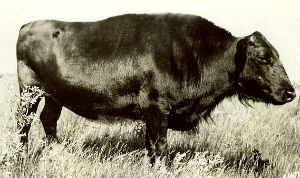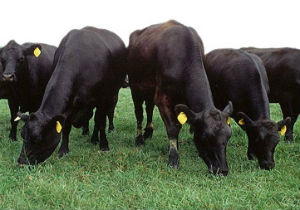American Bison × Cattle
Mammalian Hybrids
|
A diligent scholar is like a bee who takes honey from many different flowers and stores it in his hive.
—John Amos Comenius
|
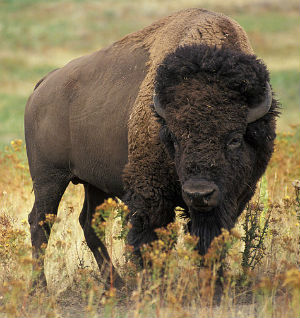
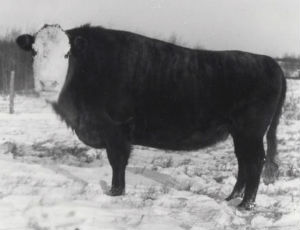 A bison-cattle hybrid; the white face of Hereford cattle and the polled condition of Angus cattle are dominant in crosses with buffalo.
A bison-cattle hybrid; the white face of Hereford cattle and the polled condition of Angus cattle are dominant in crosses with buffalo.
This cross is an excellent example of how new breeds of animals can be produced via hybridization (see video above). The hybrids are known as cattaloes or beefaloes. The Beefalo breed, derived from backcrossing of this hybrid to cattle, was first marketed in the 1960s. Beefaloes will graze open winter range too cold for cattle. Their meat is leaner and has a lower cholesterol content than does ordinary beef.
Experimental crossing of bison with domestic cattle dates back at least as far as the 1700s. Because B. bison and B. taurus produce partially fertile hybrids, the 18th century French naturalist Georges-Louis Leclerc, Comte de Buffon (1707–1788) suggested that they should be treated as conspecific.
Hybrids have the hump, thick skin, and disease resistance of bison, and show heterotic growth. F₁ males are sterile, but the fertility of later-generation male hybrids improves with backcrossing. Domestic bulls are usually chosen as sires in the first cross, since matings of bison bulls with cows are frequently fatal to both mother and the hybrid fetus (though in backcrosses the mortality rate does decline markedly). Such deaths are due to the fetus growing too large for delivery (as is the case in certain other types of hybrid crosses). Backcrossing, too, is usually to domestic bulls, since breeding back to buffalo bulls is also often fatal to F₁ mothers.
Bison-cattle hybridization has adversely affected programs to conserve the American bison. Several studies have shown cattle mtDNA to be present at high levels in herds that are phenotypically bison. For example, Ward et al found cattle mtDNA in 6 of 15 bison herds (40%), and 30 of 572 (5.2%) individuals, examined, a finding attributable to past hybridization. Halbert et al. (2005) have even shown that the genomes of many phenotypic bison contain a significant percentage of cattle nuclear genes. The National Park Service has argued that buffalo on the North Rim of the Grand Canyon should not be protected because they are part cattle (Franke 2003, p. 230). Today approximately 500,000 animals with the appearance of American bison exist in North America, but most of these are bison-cattle hybrids in private herds. Verkaar et al. (2004) suggest that the European Bison (Bison bonasus) may be derived from ancient hybridization of B. taurus with B. bison, or with precursors of B. bison (i.e., Bison priscus or possibly Bison schoetensacki).
The white face of Hereford cattle and the polled condition of Angus cattle are dominant in crosses with buffalo. The gestation period required for the development of an F₁ hybrid averages about 264 days.
For anyone interested, here's another cross that produced new breeds.
Buffalo Jones and early work developing the cattalo >>
An old (1905) report about cattalo breeding >>
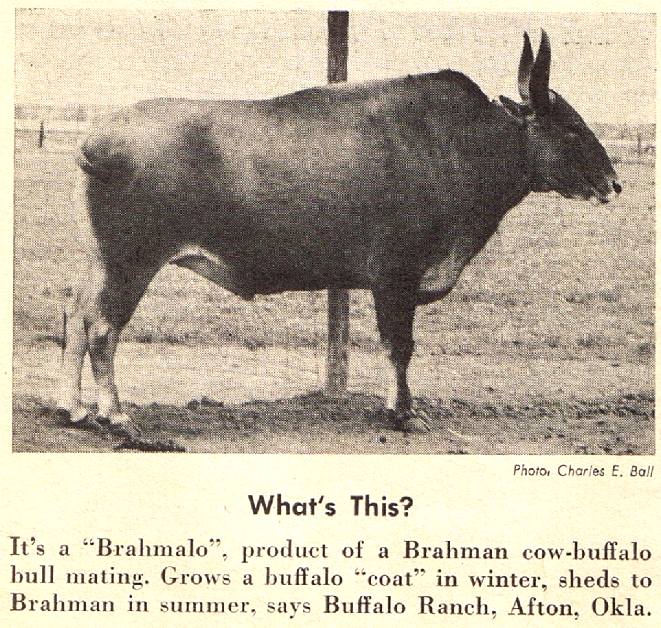 A brahma-bison hybrid (Farm Journal, 1959). This photo is shown under an assumption of fair use.
A brahma-bison hybrid (Farm Journal, 1959). This photo is shown under an assumption of fair use.
Documentation: Anonymous 1850 (p. 39); Basrur 1969; Basrur and Moon 1967; Benazzi 1977; Boyd 1908†; 1914; Canada Department of Agriculture 1961; Dary 1974; Haines 1970; Goodnight 1914; Iwanoff 1911; Jones 1907; Logan and Sylvestre 1951; McHugh 1972; Meager 1986; Müller-Haye 1963; Pathak and Kieffer 1979; Peters and Slen 1964; Polziehn et al. 1995; Prichard 1836 (p. 141, citing von Zimmermann 1777); Rafinesque 1821(pp. 114-115); Roe 1970; Smoliak and Peters 1955; Steklenev 1990; Verkaar et al. 2004; Ward et al 1999, 2001; Wied 1906 (vol. 24, pp. 129-130).
By the same author: Handbook of Avian Hybrids of the World, Oxford University Press (2006).
